Homemade X-ray scanner
At airports around the world, X-ray backscatter scanners are used to screen passengers and baggage. This is the very apparatus that in its time caused a number of scandals for "undressing" people.
American self-made Ben Krasnov (Ben Krasnow) assembled a working model of such a scanner from parts purchased on ebay (the author's description ). Here is an example of an image taken by Ben:
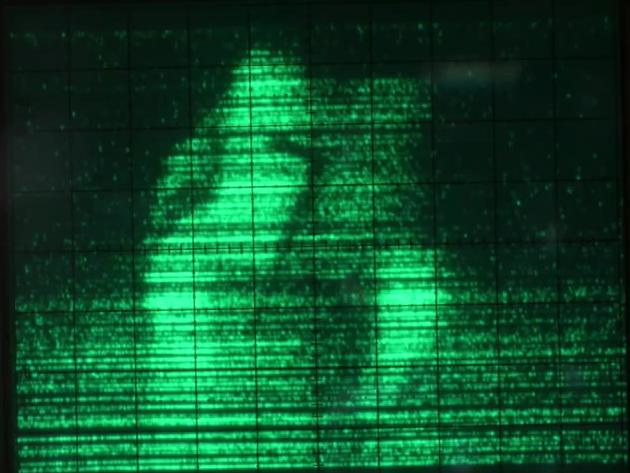
You know what it is?
That's right, this is a turkey in a Christmas sweater:

')
In addition, she tried to carry a hex key inside herself, which was easily detected by the scanner.

The scanner consists of an X-ray tube with a scanner (in the photo in the middle), an X-ray detector (left) and power supplies (right).
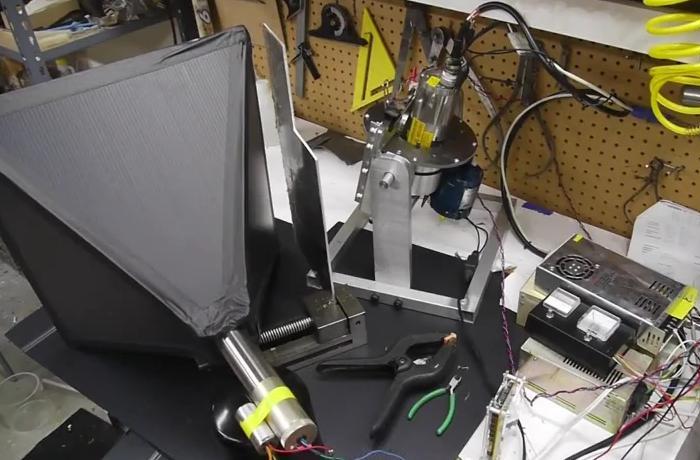
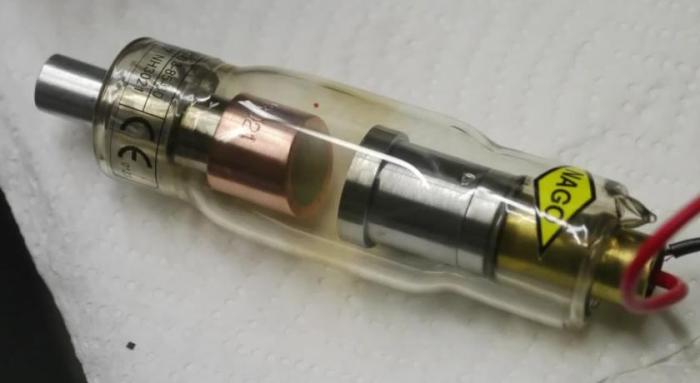
It works as follows: electrons emitted by the cathode (on the right) are accelerated by a strong electric field and enter the massive anode (on the left). With a sharp deceleration in the anode material, the electrons generate x-rays . Due to the beveled surface of the anode, the radiation is reflected to the side and leaves the tube. To power the tube you need a high-voltage source of several tens of kilovolts.
The tube is placed in a metal case with a narrow exit slot. There is a collimator disc with small holes in the slit, which makes a thin beam out of a wide beam of radiation.
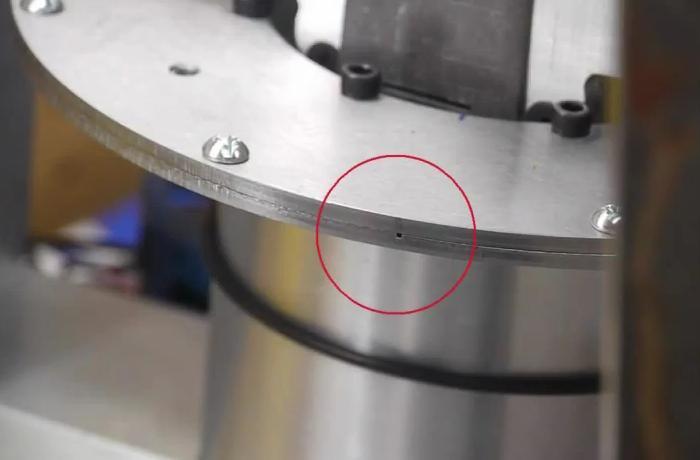
During the installation, the disk rotates by the engine, and the beam moves horizontally, tracing line by line. Vertical sweep is performed by turning around the horizontal axis of the tube along with the body and the disk. While this is done manually, but the design provides for the installation of the second motor.
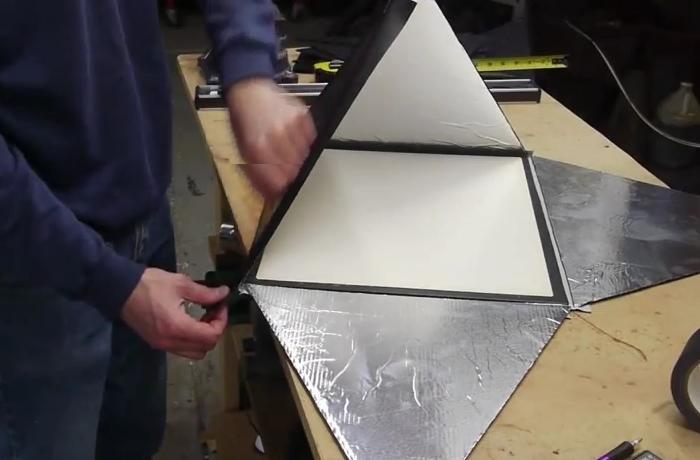
Under the action of X-rays scattered by the object, the screen begins to glow. The PMT converts this light into an electrical signal. The signal from the photomultiplier tube is amplified by a simple amplifier and fed to an oscilloscope, to the brightness control input (Z input).

The horizontal scan of the oscilloscope is synchronized with the rotation of the collimator, thus, one line of the image is visible on the oscilloscope.
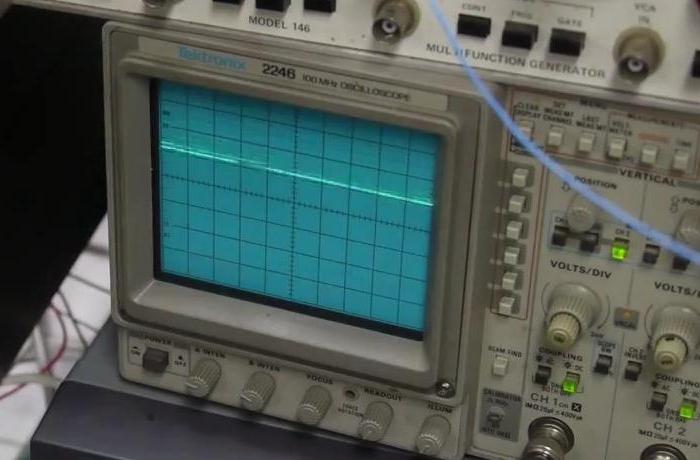
The device of the vertical deflection of the beam is equipped with a potentiometer, the signal from which is fed to the Y-input of the oscilloscope. Thus, when the x-ray beam is up and down, the line on the oscilloscope screen moves accordingly. To compose a complete picture of the individual lines, Ben simply takes a picture of the oscilloscope screen with a long exposure.
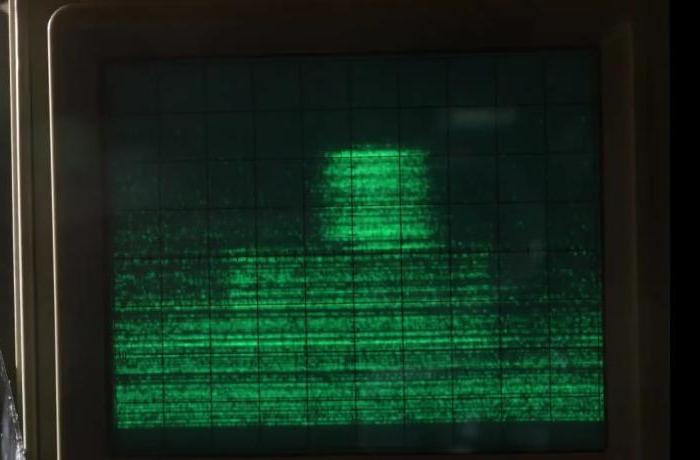
The image is not very clear, noisy, but it clearly guesses the contours of the object and the contrasting elements of the internal structure (for example, a key in a turkey).
The story about the x-ray detector and photomultiplier:
American self-made Ben Krasnov (Ben Krasnow) assembled a working model of such a scanner from parts purchased on ebay (the author's description ). Here is an example of an image taken by Ben:

You know what it is?
That's right, this is a turkey in a Christmas sweater:

')
In addition, she tried to carry a hex key inside herself, which was easily detected by the scanner.

Principle of operation
Unlike the first-generation inspection systems and medical X-ray devices, backscatter scanners register radiation that does not pass through an object, but is reflected from it. X-ray backscattering is primarily due to the Compton effect . While translucent scanners can only obtain the distribution of the density of a substance, the backscattering installations can distinguish the composition of the material, including organic.The scanner consists of an X-ray tube with a scanner (in the photo in the middle), an X-ray detector (left) and power supplies (right).

Radiation source
The source of X-rays is such a tube:
It works as follows: electrons emitted by the cathode (on the right) are accelerated by a strong electric field and enter the massive anode (on the left). With a sharp deceleration in the anode material, the electrons generate x-rays . Due to the beveled surface of the anode, the radiation is reflected to the side and leaves the tube. To power the tube you need a high-voltage source of several tens of kilovolts.
The tube is placed in a metal case with a narrow exit slot. There is a collimator disc with small holes in the slit, which makes a thin beam out of a wide beam of radiation.

During the installation, the disk rotates by the engine, and the beam moves horizontally, tracing line by line. Vertical sweep is performed by turning around the horizontal axis of the tube along with the body and the disk. While this is done manually, but the design provides for the installation of the second motor.
Detector
The detector consists of a fluorescent screen and a photomultiplier tube (PMT) in an opaque housing.
Under the action of X-rays scattered by the object, the screen begins to glow. The PMT converts this light into an electrical signal. The signal from the photomultiplier tube is amplified by a simple amplifier and fed to an oscilloscope, to the brightness control input (Z input).

The horizontal scan of the oscilloscope is synchronized with the rotation of the collimator, thus, one line of the image is visible on the oscilloscope.

The device of the vertical deflection of the beam is equipped with a potentiometer, the signal from which is fed to the Y-input of the oscilloscope. Thus, when the x-ray beam is up and down, the line on the oscilloscope screen moves accordingly. To compose a complete picture of the individual lines, Ben simply takes a picture of the oscilloscope screen with a long exposure.

The image is not very clear, noisy, but it clearly guesses the contours of the object and the contrasting elements of the internal structure (for example, a key in a turkey).
Video
Ben talks about his installation and demonstrates it in his work:The story about the x-ray detector and photomultiplier:
Source: https://habr.com/ru/post/160879/
All Articles